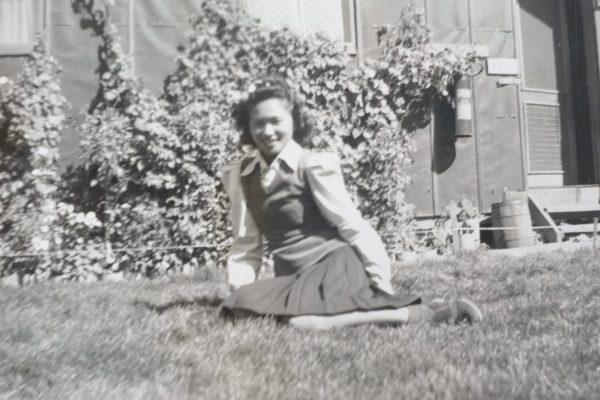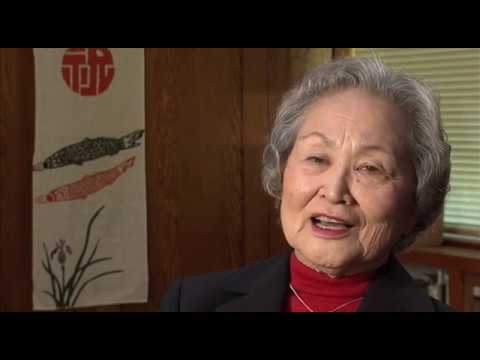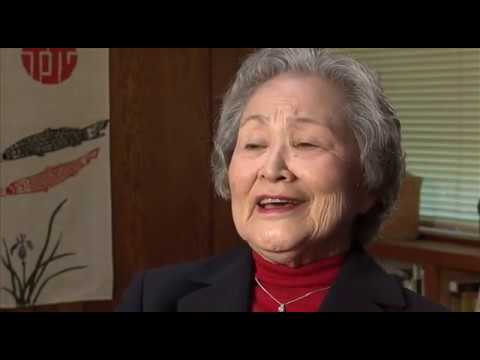Manzanar barracks and bathrooms – Matsue Watanabe (OH0065)
Transcript
They were black, black tar–papered barracks, and they had ’em divided into — it was about fifteen by a hundred, and they had ’em divided into four quarters. And so each family would have one of those quarters, which would be only be about fifteen by twenty at that time, right? And, and they had a little, a little oil stove in there for our heat. There’s no sink or running water. And we had to go and put ticking in, in a bag for our mattresses and bring it back to put on the cots. And so we would line, we lined up our cots, because there were seven us, that we had to line up four on one side and three on the other. And there were no closets or anything, so, eventually we put a bedspread up for closet space so that you could at least dress in privacy. And you had to, I remember, I remember outhouses.
And they had two outhouses in between two barracks, so that’s where you’d go for your bathroom. And actually, no running water. I don’t know what we did, whether we, they had the laundry room running water or not. But, eventually they had the latrines and the, and the laundry rooms fixed up, and the shower. But the latrines, after they fixed them up, or course, we didn’t have any dividers in them, so it was all open. And that was an experience. Because you didn’t have any privacy at all. And neither did you have when you were taking a shower, because it was one room with, let me see, I think it had four showerheads coming out of there.
So, if there were four people in there, well then you’d have to wait your turn and take your shower after that. And you would get quite dirty and dusty there because the desert is very sandy and the wind blows and your, your hair is always full of sand and so is your apartment. Because your apartments have, weren’t sealed so that the dust would, would not come in. As a matter of fact, they used to come up through the floors.





